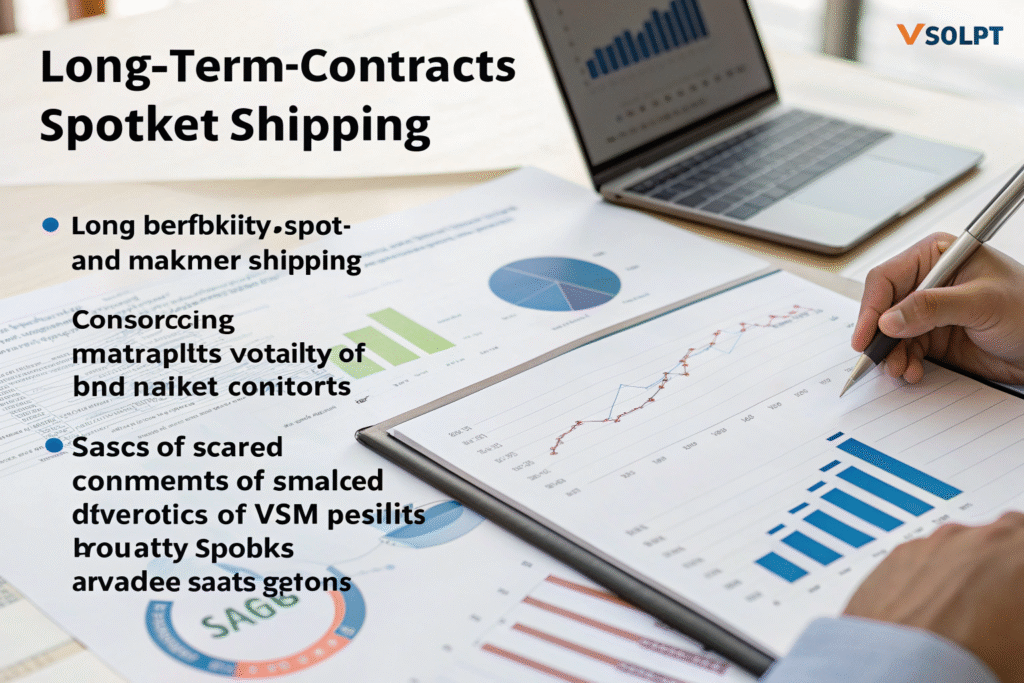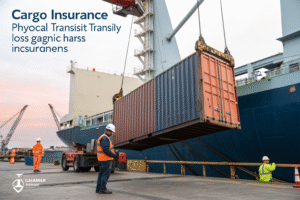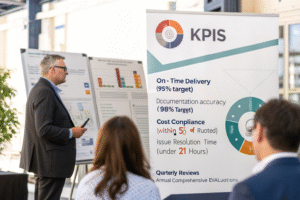When one of our clients committed to a two-year contract during the 2021 freight crisis, they secured container rates 40% below spot market while competitors faced constant capacity shortages. As founder of GeeseCargo, I've witnessed how strategic long-term partnerships create stability during market volatility, but poor contracts lock businesses into unfavorable terms that erode profitability. The decision requires careful analysis of your shipping patterns, market conditions, and the forwarder's capabilities.
Signing a long-term contract with a freight forwarder typically makes sense for businesses shipping 25+ containers monthly with stable volume patterns, offering 15-30% cost savings versus spot rates while guaranteeing capacity. However, companies with fluctuating volumes or those new to importing should maintain flexibility with shorter agreements until their shipping patterns stabilize and service requirements clarify.
Long-term forwarder relationships represent strategic partnerships rather than transactional arrangements, offering benefits beyond simple cost savings but requiring commitment that limits flexibility. Understanding the trade-offs enables informed decisions aligned with your business objectives.
What Are the Financial Advantages of Long-Term Contracts?
Cost stability represents the most significant financial benefit, transforming logistics from a variable expense to a predictable cost center. This predictability enhances budgeting accuracy and financial planning.

How Do Contract Rates Compare to Spot Market Pricing?
Fixed pricing mechanisms lock in rates for the contract duration, typically 12-24 months. During periods of rising freight costs, these fixed rates provide substantial savings—during the 2021-2022 freight crisis, contract rates averaged 35-50% below spot market peaks.
Volume tier discounts reward consistent business with progressively lower rates. Most forwarders establish pricing tiers at 10, 25, 50, and 100+ containers monthly, with each tier offering 5-15% rate reductions.
Avoided peak season surcharges represent significant savings during volatile periods. Contract rates typically exclude or limit peak season surcharges that can add $2,000-$5,000 per container during high-demand periods.
What Hidden Cost Savings Do Contracts Provide?
Reduced administrative costs stem from streamlined processes with familiar partners. The learning curve with new forwarders typically costs 2-3 hours per shipment in additional communication and process alignment.
Avoided expediting expenses occur when contracted forwarders prioritize committed clients during capacity crunches. While spot shippers face rolling cancellations and premium charges for guaranteed space, contract clients receive reliable equipment and vessel allocation.
Error reduction through established processes decreases costly mistakes. The first 3-5 shipments with new forwarders typically experience higher error rates as processes align, creating potential for customs delays, documentation errors, and misrouting.
What Operational Benefits Justify Long-Term Commitments?
Beyond direct cost savings, long-term contracts deliver operational advantages that impact customer service, planning efficiency, and supply chain resilience.

How Does Service Quality Improve with Contract Relationships?
Dedicated account teams develop deep understanding of your business requirements. Unlike rotational assignment models for spot clients, contract clients receive consistent team members who anticipate needs and prevent issues.
Priority space allocation ensures equipment and vessel availability during tight markets. Forwarders typically allocate 70-80% of their capacity to contract clients, leaving only 20-30% for spot market transactions that face higher cancellation rates.
Customized processes align with your specific operational requirements. Long-term partners develop specialized procedures for your documentation, labeling, tracking, and communication preferences that spot providers cannot replicate.
What Strategic Advantages Do Contracts Enable?
Supply chain integration allows forwarders to optimize beyond individual shipments. With visibility across your entire logistics pattern, partners can suggest routing changes, consolidation opportunities, and inventory positioning strategies.
Technology integration creates seamless data exchange between systems. Long-term contracts justify API development, EDI implementation, and custom reporting that spot relationships cannot support economically.
Continuous improvement initiatives become feasible with committed partnerships. Forwarders invest in process enhancements, specialized training, and capability development for clients demonstrating long-term commitment.
What Risks and Limitations Come with Long-Term Contracts?
Despite significant advantages, long-term commitments carry substantial risks that require careful mitigation strategies and contractual safeguards.

How Do Market Changes Impact Contract Value?
Falling market rates can make contract pricing uncompetitive. During freight market declines, contract clients may pay 20-40% above spot market rates, creating significant cost disadvantages until contracts renew.
Volume commitment penalties impose financial consequences for underutilization. Most contracts include minimum volume requirements with penalties of $200-$500 per unused container slot, creating substantial liabilities during demand downturns.
Limited flexibility prevents taking advantage of emerging service options. New carriers, innovative routing, or specialized services may become available but remain inaccessible due to exclusive arrangements with contracted forwarders.
What Service Quality Risks Require Mitigation?
Complacency potential increases without competitive pressure. Some forwarders reduce service attention once contracts are signed, assuming account retention is guaranteed regardless of performance.
Resource allocation shifts during peak periods may disadvantage contract clients. Despite theoretical priority, during extreme capacity crunches, forwarders may prioritize highest-yield shipments rather than committed volumes.
Innovation stagnation occurs when forwarders lack incentive to improve services. Without competitive bidding pressure, some providers slow their technology adoption and process improvement initiatives.
What Contract Terms Require Special Attention?
Successful long-term agreements include specific provisions that protect both parties while maintaining flexibility to adapt to changing business conditions.

How Should Performance Standards Be Structured?
Key Performance Indicators must be specific, measurable, and tied to consequences. Standard KPIs should include on-time performance (95%+ target), documentation accuracy (98%+ target), and response time (under 2 hours for urgent issues).
Remediation processes should outline progressive consequences for underperformance. Effective contracts include notification requirements, improvement plans, and ultimately contract termination for persistent service failures.
Benchmarking provisions allow periodic rate comparison against market standards. Some contracts include clauses permitting rate adjustment if market rates fall significantly below contract levels for consecutive quarters.
What Flexibility Mechanisms Protect Against Uncertainty?
Volume bands rather than fixed commitments accommodate business fluctuations. Instead of committing to exact container counts, negotiate ranges (e.g., 20-30 containers monthly) without penalties within the band.
Rate review triggers allow adjustment under predefined conditions. Effective contracts include mechanisms for rate renegotiation if fuel prices change beyond certain thresholds or if major market disruptions occur.
Early termination options provide escape routes for unacceptable service. Performance-based termination rights, change of control provisions, and mutual convenience terminations create important flexibility.
What Alternatives Exist Between Spot and Long-Term Contracts?
Several hybrid approaches provide middle ground between complete flexibility and full commitment, offering balanced risk management for evolving businesses.

How Do Quarterly Agreements Balance Flexibility and Benefits?
Rolling quarterly contracts provide short-term commitment with preferential pricing. These agreements typically offer rates 10-15% above annual contracts but 15-25% below spot market, creating a middle ground for growing businesses.
Progressive commitment structures increase term length as relationships mature. Starting with 3-month agreements, then extending to 6 months, then annually creates natural evaluation points while building partnership benefits.
Multi-forwarder strategies divide volume among 2-3 providers with shorter contracts. This approach maintains competitive pressure while ensuring capacity through multiple relationships, though it sacrifices the deepest partnership benefits.
What Creative Pricing Models Share Risk and Reward?
Flex-rate agreements tie pricing to market indices with volume commitments. These contracts guarantee capacity while pricing adjusts monthly based on published indices, sharing market risk between shipper and forwarder.
Gain-sharing arrangements reward forwarders for cost savings they identify. Beyond basic transportation, these contracts incentivize partners to find efficiencies in customs, warehousing, and inland transportation.
Portfolio-based pricing combines various service types under blended rates. Instead of pricing each service separately, these agreements establish all-in rates that encourage optimal mode selection without financial bias.
Conclusion
The decision to sign a long-term freight forwarder contract requires careful analysis of your shipping patterns, market conditions, and strategic direction. Companies with predictable volumes, established processes, and growth trajectories typically benefit from 2-3 year agreements that provide cost stability and operational integration. Businesses facing uncertainty, rapid change, or new market entry should maintain flexibility through shorter commitments or hybrid approaches.
At GeeseCargo, we've helped hundreds of clients structure forwarder relationships that match their business models, with the most successful implementations beginning with thorough needs assessment and progressing through graduated commitment as trust and performance validate the partnership.
Begin your contract evaluation by analyzing your historical shipping data to identify patterns, then clearly define your service requirements and growth projections. Negotiate contracts that include performance safeguards, flexibility mechanisms, and clear communication protocols. Remember that the best contracts create partnerships rather than just transactions, aligning interests to drive continuous improvement and mutual success.









